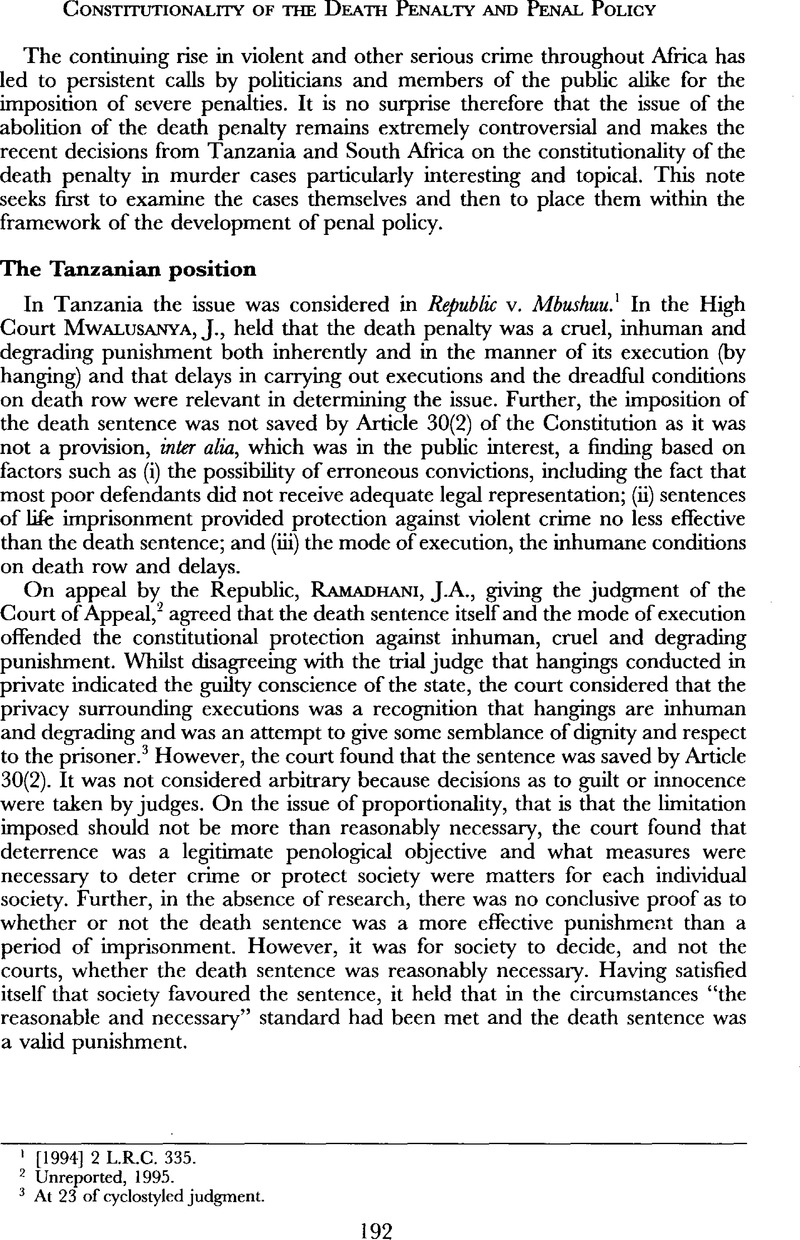Article contents
Constitutionality of the Death Penalty and Penal Policy
Published online by Cambridge University Press: 28 July 2009
Abstract

- Type
- Case Notes
- Information
- Copyright
- Copyright © School of Oriental and African Studies 1995
References
1 [1994] 2 L.R.C. 335.Google Scholar
2 Unreported, 1995.
3 At 23 of cyclostyled judgment.
4 Unreported, 1995.
5 The other ten judges concurred but wrote separate judgments emphasizing different reasons for declaring the death penalty unconstitutional. These are noted below where appropriate.
6 Relying on Kindler v. Canada (1992) 6 C.R.R. (2d) 193 (Supreme Court of Canada) and Ng v. Canada United Nations Committee on Human Rights, Communication No. 469/1991, 5 November, 1993.
7 This was a view shared by Didcott, J.
8 Ackermann, J., also emphasized the issue of arbitrariness in the implementation and application of the death penalty which meant it was inconsistent with section 9, the right to life.
9 Didcott, Ackermann, Kreigler, Langa, Mahomed and O'Regan, JJ., all found the death sentence violated the right to life.
10 Mahomed, J., also emphasized that successful deterrence of serious crime also involved the need for substantial redress in socio-economic conditions in South Africa: see paras. 286–295.Google Scholar
- 1
- Cited by




